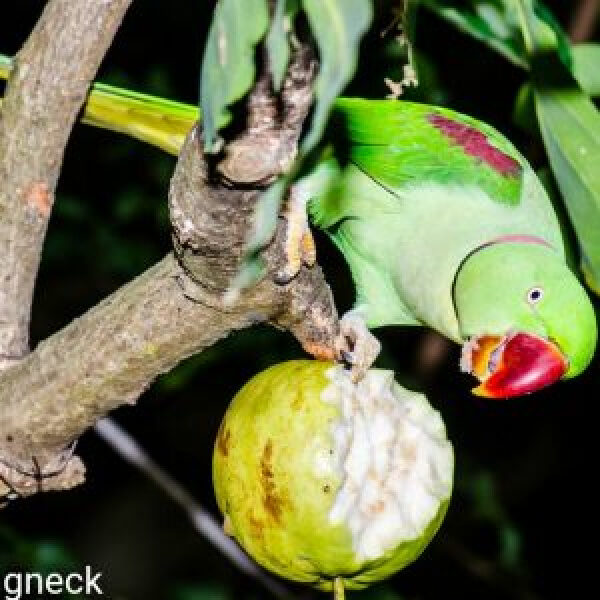Last Updated on by Mitch Rezman
Sarah writes:
Hi Mitch,
I’m a 25-year parrot rescue and parrot care specialist.
In reading your blog about “Should a blind person care for a parrot,”.
I was reading the blind woman’s response and her description about putting styptic powder on a blood feather.
This is absolutely the wrong thing to do or regardless of her being blind or not. As you probably know I feel that regarding a blood feather it is important to be able to see if the shaft is broken.
Styptic powder should only be used to stop bleeding for a nail trim.
If used on a blood Feather it can really burn and cause pain to the bird.
The only thing to do with a blood feather of a smaller bird is to apply ice cold water to the feather to stop the blood flow or a skilled bird person can use hemostats to pull the blood feather completely out and then apply pressure with a cotton ball soaked in ice water.
I own a very large 19-year-old green-winged Macaw who I have been with since he was six months old.
He is mostly a sweetheart but if he gets excited by being in the company of strangers that he’s showing off his big wings to or around his favorite people that he has crushes on he can get in overload mode and he can become aggressive toward me.
I have to watch for his body language to see his eyes pinning and his feathers fluffing to know what he is going to do.
Therefore I think it best to be sighted during this exchange.
I did have a client who was blind and she owned a blue and gold Macaw who was at least 1/2 to 1/3 the size of my big boy.
I liked your suggestion of having a sighted caregiver to look in on the bird or birds or to have someone who is not blind to help out.
Also, an amazon can bite pretty hard causing serious injury as well and one would also have to read their body language ie eyes pinning and fluffed or excited feathers to know not to handle the bird if it was overly excited.
Thanks for your informative blogs, Sarah Sweet with Sweetpreen.
Hi Sarah
Thank you for writing and the kind words.
It is opaque to me how a bird would feel pain in a blood feather having no nerves (feathers have zero nerves) only an artery while a foot contains (a relatively small amount of) nerves that do feel pain.
If I applied styptic to the area from where the feather was removed, I’d be touching nerves but most styptic powder for birds contains benzocaine, a local anesthetic used for topical pain relief.
I have tested all bird styptics as well as corn starch on my own face and body with no resulting pain.
We’ve always pulled the blood feather out carefully with needle-nose pliers.
Unfortunately, the majority of pet bird keepers have not learned toweling or safe restraint whose use is inevitable with a pet bird in your home and necessary to know before blood feather removal.
Regarding Sweetpreen’s behavior.
Birds have different ways of communicating potential aggression.
Our newest rescue Keto a 15-year-old African ringneck (we’re his 4 – 5 – 6th home??) will unemotionally lash out if you are closer than one inch, biting deep enough to draw blood and clamp his beak until you figure out how to get him off.
Years ago our Indian Ringneck’s eyes would pin and his feathers would fluff when he ate frozen corn (but loved it).
He always bit me with no warning (guerilla warfare) but never bit Catherine so I always used a perch to handle him – he was unapproachable with my hand.
Pet birds, in general, don’t always signal “aggression” as they are not hard-wired to do so and many times those signs are confused as reactions.
Flighted birds are less likely to bite knowing they have the ability to fly away from danger.
Sweetpreen is not simply “showing off his big wings,” around the company.
He’s exhibiting classic Greenwing alpha male behavior indicating that if this new flock doesn’t “fall in line” he’s going to start biting beginning with you.
That’s not aggression Sarah, that plain old jealousy.
It’s common for birds to warn their human mates that “engaging the enemy” is not tolerated.
We had a female Senegal that if she was on my shoulder and I touched Catherine in any way, I’d receive what felt something akin to a large hypodermic needle.
If you were to allow Sweetpreen to bite you, you would be passively signaling to him that biting you is OK.
I would advocate caging him when the company is over to keep him centered for his own good and yours.
Lighting placed no further away than 6 inches over his cage on a timer with 12/12 on-off can also reduce aggression by helping to keep his circadian rhythms synched.
Sweetpreen has more than 100,000,000 years of instinctual expectations that need to be examined and understood for a fully compatible human/bird relationship.
Best
MitchR
Author Profile
Latest entries
 The Traveling BirdJune 26, 2025Can You Name 5 Parrot Species That Are Living Wild in the USA?
The Traveling BirdJune 26, 2025Can You Name 5 Parrot Species That Are Living Wild in the USA? Bird BehaviorJune 26, 2025How is it Parrots Are Problem Solvers Social Animals and Even Use Tools?
Bird BehaviorJune 26, 2025How is it Parrots Are Problem Solvers Social Animals and Even Use Tools? Bird & Parrot AnatomyJune 25, 2025How a Tiny Chemical Modification Makes Parrots Nature’s Living Paintings
Bird & Parrot AnatomyJune 25, 2025How a Tiny Chemical Modification Makes Parrots Nature’s Living Paintings PigeonsJune 20, 2025How Do Parrots Thrive in Cities Outside Their Native Habitats?
PigeonsJune 20, 2025How Do Parrots Thrive in Cities Outside Their Native Habitats?




